Artificial Intelligence Applications and Self-Learning 6G Networks for Smart Cities Digital Ecosystems: Taxonomy, Challenges, and Future Directions
- PMID: 35957307
- PMCID: PMC9371016
- DOI: 10.3390/s22155750
Artificial Intelligence Applications and Self-Learning 6G Networks for Smart Cities Digital Ecosystems: Taxonomy, Challenges, and Future Directions
Abstract
The recent upsurge of smart cities' applications and their building blocks in terms of the Internet of Things (IoT), Artificial Intelligence (AI), federated and distributed learning, big data analytics, blockchain, and edge-cloud computing has urged the design of the upcoming 6G network generation, due to their stringent requirements in terms of the quality of services (QoS), availability, and dependability to satisfy a Service-Level-Agreement (SLA) for the end users. Industries and academia have started to design 6G networks and propose the use of AI in its protocols and operations. Published papers on the topic discuss either the requirements of applications via a top-down approach or the network requirements in terms of agility, performance, and energy saving using a down-top perspective. In contrast, this paper adopts a holistic outlook, considering the applications, the middleware, the underlying technologies, and the 6G network systems towards an intelligent and integrated computing, communication, coordination, and decision-making ecosystem. In particular, we discuss the temporal evolution of the wireless network generations' development to capture the applications, middleware, and technological requirements that led to the development of the network generation systems from 1G to AI-enabled 6G and its employed self-learning models. We provide a taxonomy of the technology-enabled smart city applications' systems and present insights into those systems for the realization of a trustworthy and efficient smart city ecosystem. We propose future research directions in 6G networks for smart city applications.
Keywords: Artificial Intelligence (AI); Deep Learning; Internet of Things (IoT); Machine Learning; Sixth Generation (6G) wireless communication; beyond 5G; blockchain; metaheuristics algorithms; smart city.
Conflict of interest statement
The authors declare no conflict of interest.
Figures







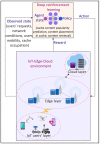
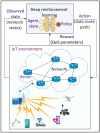

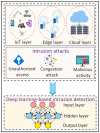



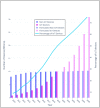
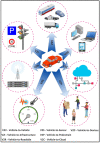


Similar articles
-
6G Networks and the AI Revolution-Exploring Technologies, Applications, and Emerging Challenges.Sensors (Basel). 2024 Mar 15;24(6):1888. doi: 10.3390/s24061888. Sensors (Basel). 2024. PMID: 38544151 Free PMC article. Review.
-
At the Confluence of Artificial Intelligence and Edge Computing in IoT-Based Applications: A Review and New Perspectives.Sensors (Basel). 2023 Feb 2;23(3):1639. doi: 10.3390/s23031639. Sensors (Basel). 2023. PMID: 36772680 Free PMC article. Review.
-
A Review of Emerging Technologies for IoT-Based Smart Cities.Sensors (Basel). 2022 Nov 28;22(23):9271. doi: 10.3390/s22239271. Sensors (Basel). 2022. PMID: 36501973 Free PMC article. Review.
-
Security Requirements and Challenges of 6G Technologies and Applications.Sensors (Basel). 2022 Mar 2;22(5):1969. doi: 10.3390/s22051969. Sensors (Basel). 2022. PMID: 35271113 Free PMC article. Review.
-
Integration of IoT-Enabled Technologies and Artificial Intelligence (AI) for Smart City Scenario: Recent Advancements and Future Trends.Sensors (Basel). 2023 May 30;23(11):5206. doi: 10.3390/s23115206. Sensors (Basel). 2023. PMID: 37299934 Free PMC article. Review.
Cited by
-
Editorial: Protecting privacy in neuroimaging analysis: balancing data sharing and privacy preservation.Front Neuroinform. 2025 Jan 7;18:1543121. doi: 10.3389/fninf.2024.1543121. eCollection 2024. Front Neuroinform. 2025. PMID: 39839854 Free PMC article. No abstract available.
-
Towards a Deep Learning Pain-Level Detection Deployment at UAE for Patient-Centric-Pain Management and Diagnosis Support: Framework and Performance Evaluation.Procedia Comput Sci. 2023;220:339-347. doi: 10.1016/j.procs.2023.03.044. Epub 2023 Apr 17. Procedia Comput Sci. 2023. PMID: 37089761 Free PMC article.
-
6G-Enabling the New Smart City: A Survey.Sensors (Basel). 2023 Aug 30;23(17):7528. doi: 10.3390/s23177528. Sensors (Basel). 2023. PMID: 37687986 Free PMC article. Review.
-
6G Networks and the AI Revolution-Exploring Technologies, Applications, and Emerging Challenges.Sensors (Basel). 2024 Mar 15;24(6):1888. doi: 10.3390/s24061888. Sensors (Basel). 2024. PMID: 38544151 Free PMC article. Review.
References
-
- Buyya R., Dastjerdi A.V. Internet of Things: Principles and Paradigms. Elsevier Science; Amsterdam, The Netherlands: 2016.
-
- Russell S., Norvig P. Artificial Intelligence: A Modern Approach. Prentice Hall; Upper Saddle River, NJ, USA: 2002.
-
- AbdulRahman S., Tout H., Ould-Slimane H., Mourad A., Talhi C., Guizani M. A survey on federated learning: The journey from centralized to distributed on-site learning and beyond. IEEE Internet Things J. 2021;8:546–5497. doi: 10.1109/JIOT.2020.3030072. - DOI
-
- Chen M., Mao S., Liu Y. Big data: A survey. Mob. Netw. Appl. 2014;19:171–209. doi: 10.1007/s11036-013-0489-0. - DOI
-
- Ismail L., Materwala H. A Review of Blockchain Architecture and Consensus Protocols: Use Cases, Challenges, and Solutions. Symmetry. 2019;11:1198. doi: 10.3390/sym11101198. - DOI
Publication types
MeSH terms
LinkOut - more resources
Full Text Sources

